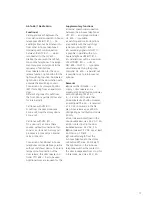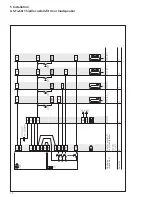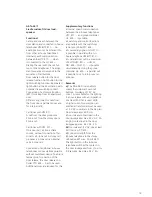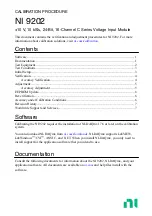
4
Configuration of the 1+n system
The basic installation is performed
as a side circuit installation.The door
stations and in-house telephones
are routed to the sub-distributor.
Installation can be performed as a
star, tree or bus structure.
The door station and in-house
telephones are linked by means of
terminals 1 and 7. The side circuit
cores are routed to terminal 1
(– potential), the calling cores to
terminal 7. Te is used as a
reference terminal for the apartment
bell button ERT and to supply the
three-tone chime (terminal G) of the
deluxe in-house telephone.
Jumpers are inserted within the door
station to link the door loudspeaker
terminal block and the terminal
block of one or more call button
modules. Jumpers are inserted
between terminal 6 and 6, terminal
11 and 11 and te and +
for all call button modules. Where
there are several door stations, from
the second door station the jumper
b and + to the call button
module is only required at one door
loudspeaker. Depending on the door
loudspeaker used, terminals b and
c should be bridged differently. For
precise instructions, see chapter 5.
Functional characteristics
The bias current to terminals 1 and
7 is 18 V DC. When pressing the bell
button, the voltage rises to 24 V DC
and then drops to around 15 V DC.
After picking up the receiver,
a speech connection is created
between the door station and the
in-house telephone.
For 30 seconds after replacing the
receiver, the speech connection
can be re-established by lifting the
receiver again. The system then
returns to idle voltage and the audio
privacy device is activated. The audio
privacy device ensures that a call can
only be accepted at the in-house
telephone at which the front door-
bell rang.
Functions
• Door call: Ringing at the front
door (door station) and speech con-
nection
• Storey call: An apartment bell (ERT)
can be connected to each in-house
telephone
• Door release: Pressing the door
release button at the in-house tele-
phone switches the DR contact in
the door loudspeaker module to ter-
minal c, duration fixed at 3 seconds
• Light switching: Pressing the light
button at the in-house telephone
switches the Li contact in the door
loudspeaker module to terminal c,
duration fixed at 0.8 seconds
Other functions are possible
using additional controllers:
• Group controller: Permits internal
speech operation between 6
in-house telephones or parallel
switching of up to 6 in-house tele-
phones at one bell button
• Storey controller: permits the con-
nection of door stations to one or
more storeys
• Switching and remote controller
permits switching and control func-
tions via the in-house telephones
• Door release controller: takes care
of tamper-proof operation of the
door release
Power supply
The line rectifier NG 602-… supplies
the door station with the following
voltages:
+/–
24 V DC for speech
and control
b/c
12 V AC for illumination of
the call button module and
door release
3 Configuration, conductor lengths
1+n technology
Содержание AS-Ta-64/1
Страница 1: ...System Manual 1 n technology Issue 2013 ...
Страница 7: ...7 ...
Страница 16: ...16 5 Installation AS Ta 64 1 Siedle Vario Remarks Appliance requirement ...
Страница 20: ...20 5 Installation AS Ta 64 1 Siedle Classic Remarks Buttons Appliance requirement ...
Страница 22: ...22 5 Installation AS Ta 64 1 Siedle Steel Remarks Buttons Appliance requirement ...
Страница 26: ...26 5 Installation AS Ta 64 2 Siedle Vario with 2 door stations Remarks Appliance requirement ...
Страница 30: ...30 5 Installation AS Ta 64 3 Siedle Vario with 3 door stations Remarks Appliance requirement ...
Страница 32: ...32 5 Installation AS Ta 74 1 Siedle Vario internal speech communication Remarks Appliance requirement ...
Страница 53: ...53 ...





































